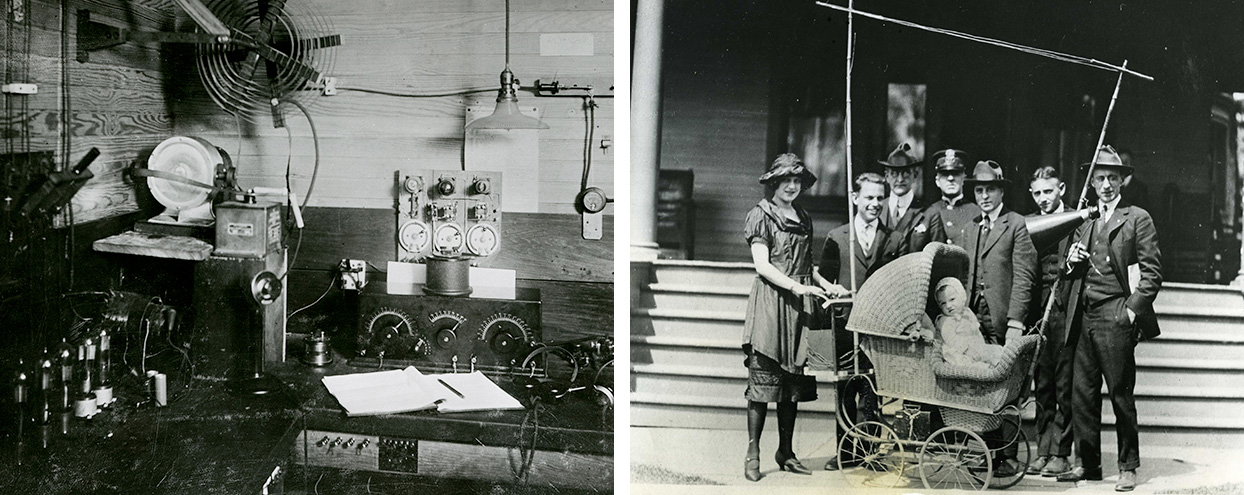'Music hurtling through the ether'
On the evening of Oct. 14, 1920, amateur radio operators as far away as Hartford, Conn., could hear a scratchy phonograph recording of Irving Berlin’s “Tell Me, Little Gypsy” sung by tenor John Steel. Then came seven more pieces from records borrowed from the H.S. Barney department store in exchange for on-air mention.
The signal came from the Union campus, where a 150-watt transmitter and an antenna strung between two trees “sent the music hurtling through the ether,” according to Concordiensis.
The first broadcast, with William G. McCaig ’23 as announcer, went from 8 to 8:30 with a three-minute break midway to cool down the transmitter. It was the first of 30 weekly Thursday night concerts from the station then known as 2ADD.
In the competitive era of early radio, an Oct. 16, 1920 Concordiensis headline left little doubt about pride: "UNION AGAIN PIONEER OF AMERICAN COLLEGE WORLD; MUSIC BY WIRELESS TELEPHONE LATEST RADIO FEAT"
The often-heard claim that Union was first in radio is correct if carefully defined, according to Wayne Somers, editor of the Encyclopedia of Union College History. The broadcast of Oct. 14, 1920 made Union the first college station, and the first licensed station of any kind, to air regularly scheduled programs.
Union's broadcast preceded by 19 days Pittsburgh’s KDKA, which aired the returns of the Harding-Cox presidential election on Nov. 2, 1920. Another station, 8MK of the Detroit News, began broadcasts on Aug. 20, 1920, but did not have a broadcast license.
Notwithstanding a popular radio slogan (“First Station in the Nation”) it is not correct to say that Union’s first station became WRUC; the College’s stations do not have a continuous history, Somers writes in the encyclopedia.
The 1920-21 year had a number of other firsts, many attributed to Leo Freedman ’21, the promotion-savvy secretary/treasurer: play-by-play game broadcasts, music for off-campus dances and advertisements for Union’s engineering program.
Among the exploits that year was a claim to the first portable broadcast receiver, the “wireless baby carriage.” During spring prom weekend, students outfitted a wicker baby carriage with a receiver, antenna and batteries and had a student’s date push the contraption around the streets of Schenectady as it played music broadcast from campus. The stunt was re-staged three weeks later for a newsreel that ran throughout the U.S. and Europe.
The stunt has been re-enacted several times including in 1970 when Phil Robinson ’71, apparently for lack of women students on campus, wore a dress to play the nanny. Also in that photo were Robert Ditter ’71, general manager; William G. McCaig ’ (Class of 1923), first announcer of the station; Dave Robbins ’73, announcer; C.G. “Glen” Mercer (Class of 1916), who built the radio station in 1920 with parts borrowed from General Electric; Philip Valpey ’72, announcer; and Art Forsdick ’70, production director.

